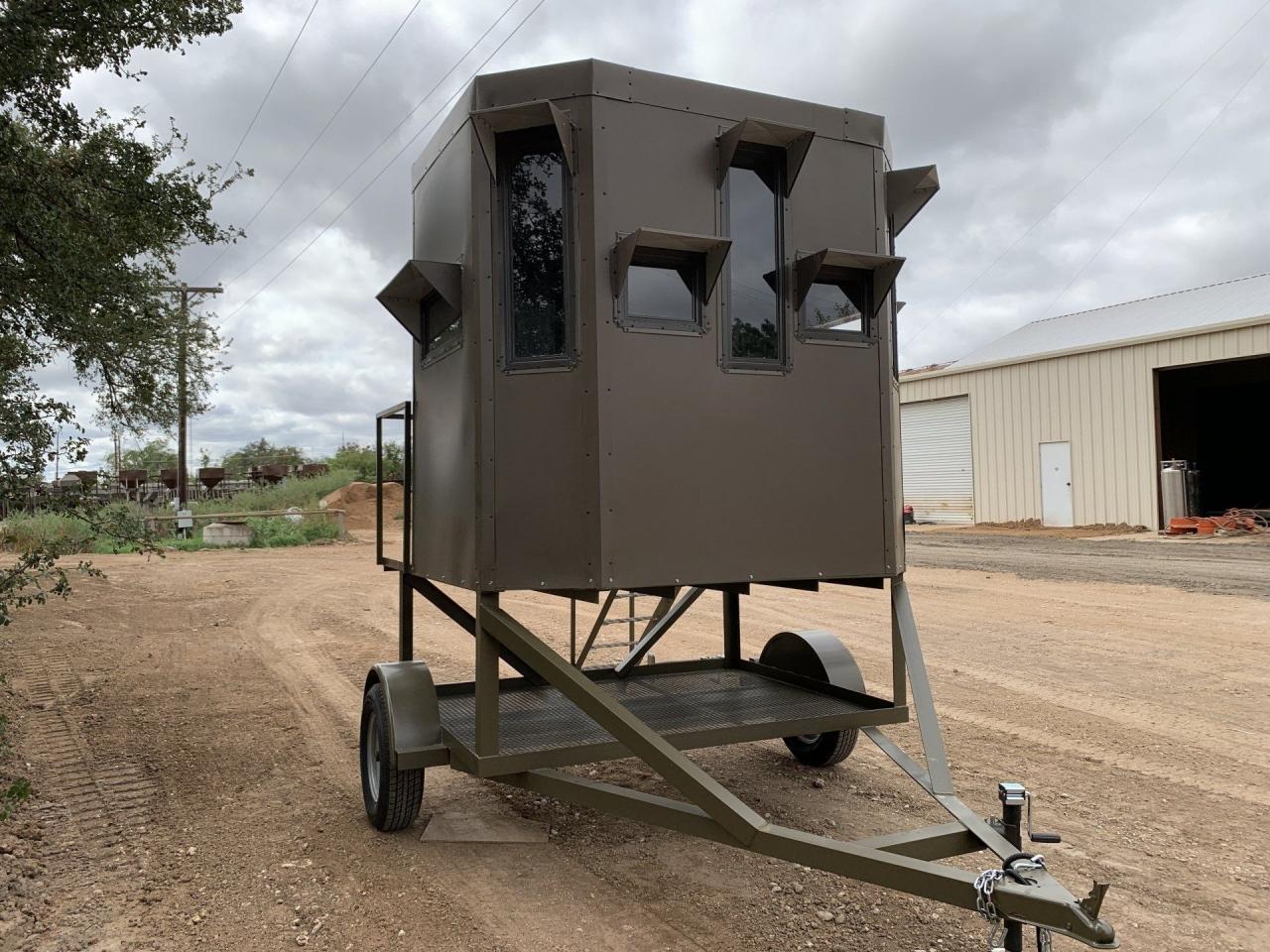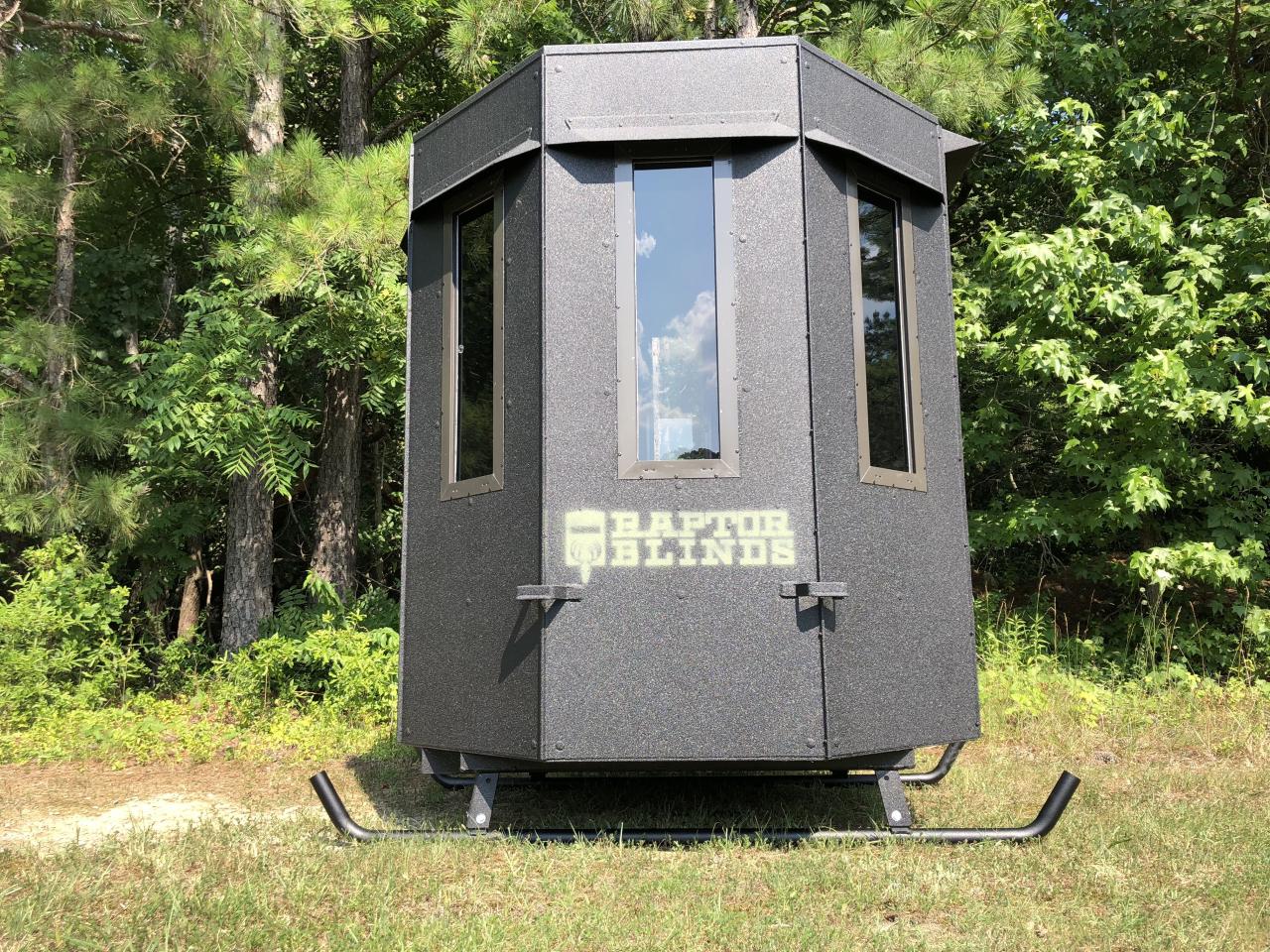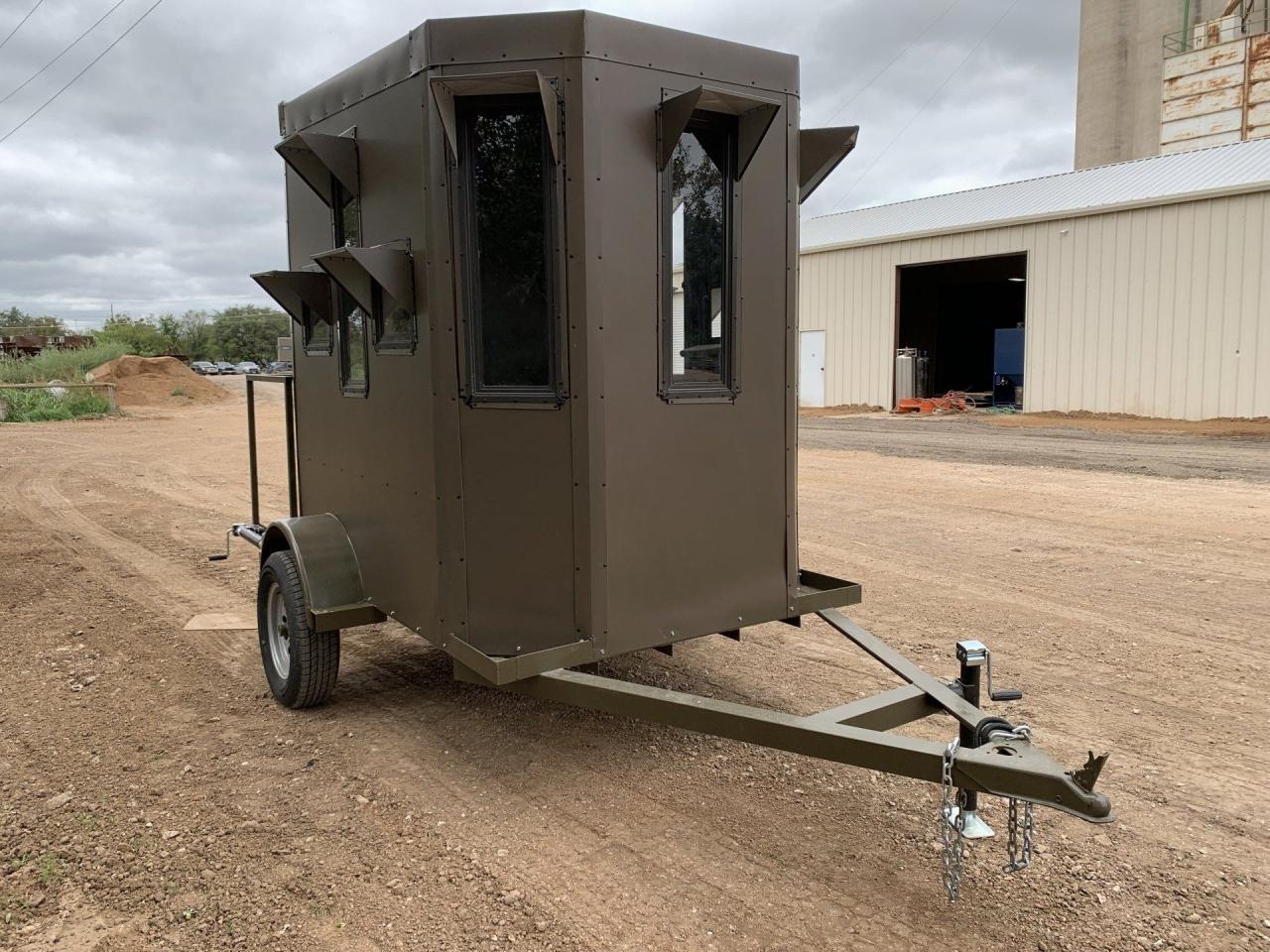Bow deer blinds offer hunters a concealed and strategic advantage in the pursuit of their prey. From ladder stands to ground blinds, this guide will explore the various types, selection criteria, setup techniques, hunting strategies, and safety considerations associated with bow deer blinds.
Bow Deer Blind Types


When it comes to bowhunting deer, choosing the right blind is crucial for success. There are various types of bow deer blinds available, each with its own advantages and disadvantages. Understanding the differences between these blinds will help you select the one that best suits your hunting style and needs.
Ladder Stands
Ladder stands are elevated platforms that are accessed by climbing a ladder. They provide a good vantage point and allow for a clear shot at deer. Ladder stands are relatively easy to set up and transport, making them a popular choice for hunters who move frequently.
Advantages:
- Elevated platform provides a good vantage point.
- Easy to set up and transport.
Disadvantages:
- Can be noisy to climb, which can spook deer.
- Not suitable for all terrain types.
Choosing the Right Bow Deer Blind
Selecting the right bow deer blind is crucial for a successful hunt. Consider these factors to make an informed decision:
- Hunting style:Ground blinds offer concealment in open areas, while elevated blinds provide an advantage in dense vegetation.
- Terrain:Match the blind to the terrain you’ll be hunting in. Pop-up blinds are ideal for flat ground, while ladder stands work well in uneven terrain.
- Weather conditions:Choose a blind that can withstand the expected weather conditions. Mesh blinds provide ventilation in warm weather, while insulated blinds keep you warm in cold weather.
Blind Type Comparison
Here’s a table comparing the features of different blind types:
| Type | Setup | Visibility | Portability |
|---|---|---|---|
| Ground Blind | Easy and quick | Limited | Good |
| Elevated Blind | More complex | Excellent | Poor |
| Pop-up Blind | Extremely quick | Fair | Excellent |
| Ladder Stand | Moderate | Excellent | Fair |
Setting Up a Bow Deer Blind
Preparing your bow deer blind for successful hunting requires careful setup. Here’s a step-by-step guide to ensure a safe and effective blind:
Choosing a Location, Bow deer blind
Selecting the ideal blind location is crucial. Look for areas with frequent deer activity, such as trails, feeding grounds, or water sources. Consider wind direction to avoid alerting deer to your presence.
Leveling the Blind
Ensure your blind is level for a comfortable and stable shooting position. Use a spirit level to check the base of the blind and adjust the legs accordingly.
Concealing the Blind
Camouflage your blind effectively to avoid spooking deer. Use natural vegetation or blind covers to break up its Artikel. Avoid shiny materials and excessive movement that could draw attention.
Infographic: Bow Deer Blind Setup Process
[Insert infographic or diagram depicting the blind setup process]
The bow deer blind is a great way to get close to deer without being detected. It’s made of durable materials that can withstand the elements, and it’s easy to set up and take down. If you’re looking for a way to improve your deer hunting success, the bow deer blind is a great option.
And if you’re looking for a tractor that can handle your hunting needs, the deere 135c is a great choice. It’s powerful and versatile, and it can handle even the toughest terrain. With the bow deer blind and the deere 135c, you’ll be well-equipped for your next hunting trip.
Hunting Techniques from a Bow Deer Blind


Deer hunting from a bow deer blind can be an effective way to get close to your target. By using scent control, minimizing movement, and choosing the right shot placement, you can increase your chances of success.
Scent Control
- Wash your clothes in scent-free detergent before hunting.
- Use scent-eliminating sprays or gels on your body and clothing.
- Avoid smoking or using strong perfumes or colognes.
- Be aware of the wind direction and position your blind accordingly.
Movement Minimization
- Move slowly and deliberately when entering and exiting the blind.
- Avoid making sudden movements or loud noises.
- Use a shooting stick or tripod to steady your bow.
- Practice shooting from the blind before hunting to get comfortable with the space.
Shot Placement
- Aim for the vital organs, such as the heart or lungs.
- Use a sharp broadhead for a clean kill.
- Be patient and wait for the deer to be in a good position before shooting.
- Follow up on your shot to ensure a clean kill.
Safety Considerations for Bow Deer Blind Hunting


Hunting from a bow deer blind can be an exciting and rewarding experience, but it’s crucial to prioritize safety to avoid accidents and ensure a successful hunt.
While bow deer blinds are perfect for staying hidden during the hunt, some hunters prefer to add a touch of personality to their gear with deer head charms . These small, decorative pieces are designed to attract deer and add a bit of style to your blind.
Whether you’re a seasoned hunter or just starting out, a deer head charm is a fun and unique way to enhance your hunting experience.
Before entering the blind, conduct a thorough inspection of the structure and surroundings. Ensure that the blind is stable and securely fastened, and check for any loose boards or potential hazards. Always wear a safety harness when hunting from an elevated blind to prevent falls.
Proper Clothing
Dress appropriately for the weather conditions and wear blaze orange clothing to enhance visibility. Avoid wearing loose clothing that could get caught on branches or equipment. Additionally, wear gloves to protect your hands from the cold and thorns.
Awareness of Surroundings
Remain vigilant and constantly be aware of your surroundings. Scan the area regularly for any movement or potential threats. Keep noise levels to a minimum to avoid spooking deer. Be cautious when entering or exiting the blind, as deer may be nearby.
Safety Checklist
- Inspect the blind thoroughly before use.
- Wear a safety harness when hunting from elevated blinds.
- Dress appropriately for the weather and wear blaze orange clothing.
- Be aware of your surroundings and scan the area regularly.
- Keep noise levels to a minimum.
- Be cautious when entering or exiting the blind.
Elevated Blind Dangers
Hunting from elevated blinds poses additional safety risks. Always ensure that the blind is securely fastened and stable. Use a ladder or steps to access the blind, and avoid jumping or climbing. Be aware of the height and potential for falls, and never lean over the edge of the blind.
Epilogue


Mastering the art of bow deer blind hunting requires a combination of knowledge, skill, and preparation. By understanding the different types of blinds, choosing the right one for your needs, setting it up effectively, employing effective hunting techniques, and prioritizing safety, you can maximize your chances of success and enjoy a thrilling and rewarding hunting experience.
Questions Often Asked
What are the main types of bow deer blinds?
Bow deer blinds come in various types, including ladder stands, hang-on stands, box blinds, and ground blinds, each with its advantages and disadvantages.
How do I choose the right bow deer blind?
Consider your hunting style, terrain, weather conditions, and budget when selecting a bow deer blind to ensure it meets your specific needs.
What safety precautions should I take when using a bow deer blind?
Always use a safety harness, wear appropriate clothing, be aware of your surroundings, and never hunt from an elevated blind alone.







